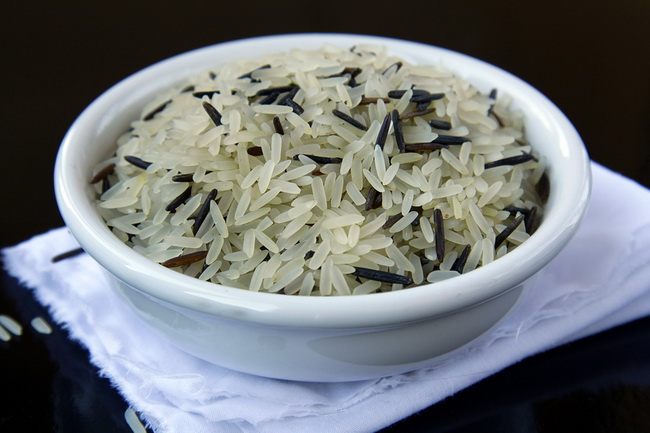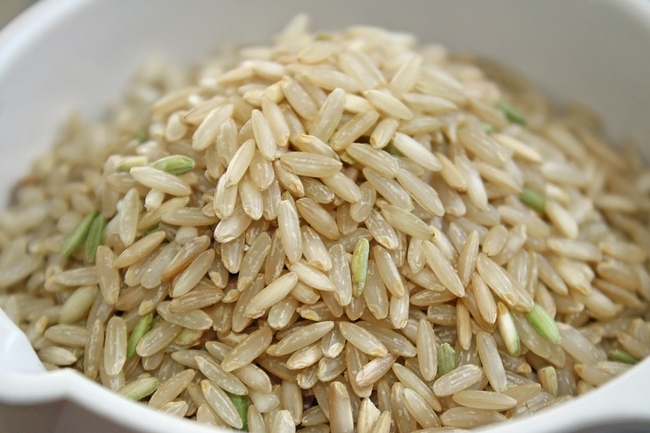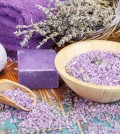- Make It Yourself Lavender Heart-Shaped Bath Bombs!
- 20 Things You Never Knew About “Down There”
- 12 Best Foods For Those Suffering From Arthritis Pain
- 12 Personal Hygiene Mistakes Almost Everyone Makes (Mom Never Told You About #4!)
- 15 Medicinal Plants And Herbs From The Cherokee People
- 12 Mind-Blowing Benefits Of Drinking Coconut Water During Pregnancy
- 12 Outstanding Winter Foods That Won’t Fatten You Up Like A Christmas Turkey
Your Rice Might Still Contain Shocking Levels of Arsenic

Photo credit: bigstock.com
You might have heard this story back in 2012: most rice products contain significant levels of inorganic arsenic. Yes, arsenic, a known carcinogen and poison. Consumer Reports, a magazine that investigates the safety of food and many products on the market, discovered during a test that most rice sold in the United States contains shocking levels of arsenic.
The EPA (United States Environmental Protection Agency) states that no amount of inorganic arsenic is safe, but federal limits regarding arsenic only apply to drinking water and not to food.
Unfortunately, Consumer Reports has conducted a new study that shows the problem of arsenic is now worse than it was in 2012! After reviewing data that was released in 2013 by the FDA regarding the inorganic arsenic content of more than 650 rice or rice containing products, Consumer Reports found that rice, rice cereal, and rice pasta contained even more inorganic arsenic than they originally contained in 2012.
This new study shows that just one serving of rice, rice cakes, or rice cereal can put children over the maximum amount of rice that children should have in an entire week. For example, one rice cake can give a child their weekly limit of rice intake in just one serving.
Rice drinks were also found to be very high in arsenic and it is highly recommended that children under 5 years of age avoid them entirely. Children under five should have no more than one serving of rice cereal a day to limit their arsenic intake.
Arsenic is known to increase the risk of developing numerous types of cancer, and regular exposure, even to very small amounts, can cause diabetes, heart disease, and affect the immune system of fetuses.
Continue to Page 2

Photo credit: bigstock.com
Brown rice was no better than white rice. In fact, this recent study showed that brown rice had 80 percent more inorganic arsenic then white rice. This is because arsenic accumulates on the outside layer of the rice. With white rice, this outside layer is removed. It’s interesting to note that white rice grown in Louisiana, Arkansas, or Texas had the highest levels of arsenic. White basmati rice from India, Pakistan, and California had about half of the arsenic that most other types of rice contained.
You can greatly reduce your arsenic intake by first rinsing rice before cooking and using a ratio of 6 cups of water to one cup of rice. Just rinsing the rice well before cooking will reduce your arsenic intake by as much as 30 percent. Additionally, choosing white rice from California, such as Lundberg brand Basmati rice, can greatly lower your intake of arsenic.
SEE ALSO: Everything About Rice Infographic
You can enjoy gluten free grains such as millet, buckwheat, amaranth, polenta, and grits as these had negligible levels of arsenic. Quinoa, barley, and bulgur were also tested and found to have extremely low levels of arsenic. These would all be smart alternative to rice.
If you love rice and eat it often, you will want to limit your weekly consumption of rice to lower the health risks involved in consuming inorganic arsenic. Remember that arsenic accumulates in the body and rice is not the only food that contains this poison. Vegetables and water also contain small levels of arsenic. So it’s important to be smart about your diet and consume only rice with lower levels of arsenic, rinse it well, and eat it in moderation. Read also about the best foods to eat for a heavy metals detox.
References:

































robber2112
Apr 7, 2015 at 5:46 pm
Sounds like the EPA and the FDA, need to get off their butt’s, and do their job of protecting us USA citizens, not merely receiving a free paycheck…
Alfred
Apr 8, 2015 at 10:48 am
How does organic rice compare in quantities of arsenic to regular rice???